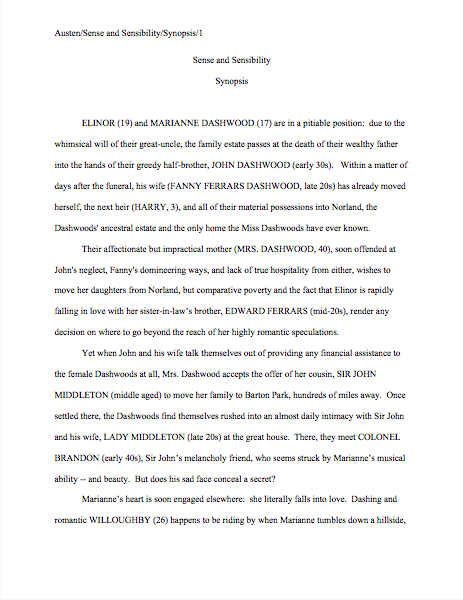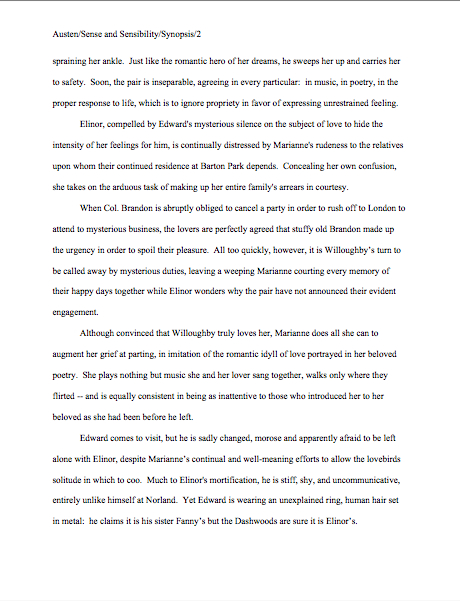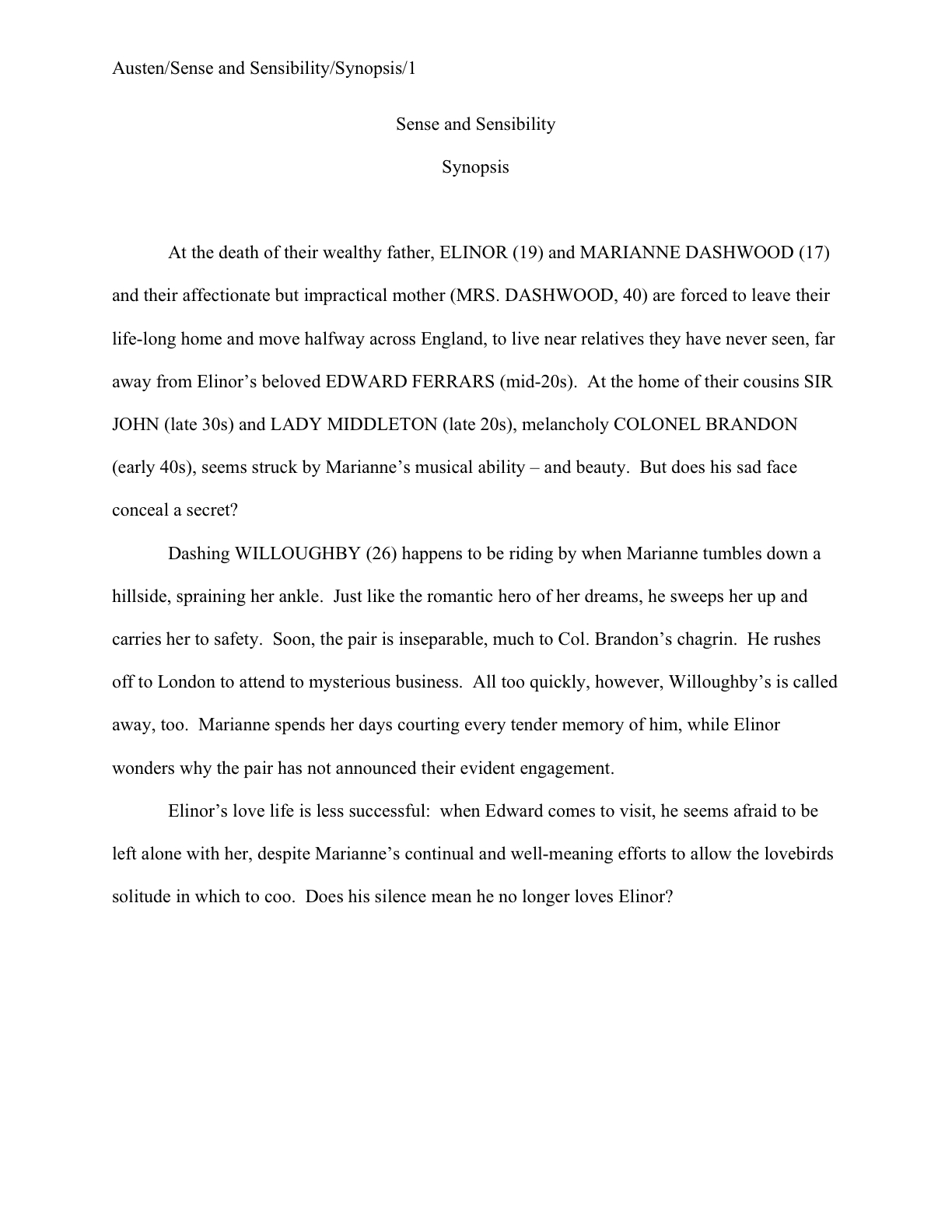Is everybody comfortable? Would you like to grab yourself a cup of tea, a cookie or two, perhaps a nice sandwich? Before we resume our ongoing discussion of synopsis troubleshooting, I need to talk to you about something serious, so you might want to have sustenance readily to hand, to fortify you.
Before any of you start to panic, let me hasten to add: please note that I didn’t send you to the liquor cabinet to pour yourself a stiff one, or the medicine cabinet to dig out your heart medication. The last thing I want to do is to add to the general air of gloom pervading pretty much every source of information in the continental U.S. at the moment, but I’d like to put a bug or two in your ear — who ever came up with that revolting expression, I wonder, and why did anyone think to perpetuate it? — about what hard economic times tend to do to the publishing industry.
Don’t worry, though: I come not to bury the industry, but to praise it, at least indirectly.
As pretty much everyone who has heard a Manhattan-based agent or editor speak within the last two years is already aware, the mainstream publishers have been rather nervous about the economy for quite some time now. Rumor has it that it’s rendered some already risk-averse people even more risk-averse. What does that mean translated out of economic-speak? It’s harder than ever to convince an editorial committee to take a chance on an unusual book — or an untried author.
Not that it’s ever been a particularly easy sell, of course. But one does hear a great deal of sighing these days, accompanied by exclamations of, “Oh, I could have sold that five years ago.”
What’s the rationale behind this increased difficulty, you ask? Well, when the average Joe (he of the much-vaunted six-pack, presumably) faces economic uncertainty — or, for that matter, the certainty of a lost job — he tends to slow his purchase of non-necessities. Apparently, to those benighted souls not hopelessly enslaved to the power of the written word, books fall into the non-essential category.
I know; weird. But there’s no accounting for taste.
What does sell well to ol’ Joe in uncertain times? In the U.S., peanut butter and jelly, cereal, ramen, and other inexpensive comfort foods. In fact, PB & J sales are such a good indicator of consumers’ feelings about the economy that trend-watchers keep an eye on ‘em.
Seriously — it’s called the Peanut Butter Index. (One also hears about it as the PB&J Index, the Oreo Index, or the Mac & Cheese Index, but these terms all refer to the same basic trend.) It may sound a bit silly, but I assure you, folks in the publishing industry take it very seriously: when the PBI is high, the prevailing wisdom goes, new book sales tend to be low.
Library card usage, interestingly, tends to rise. (Hey, readers are smart. And good sandwich-makers, apparently.)
What does a high PBI mean for the average aspiring writer, you ask? Well, typically, the difficulty of landing an agent increases, especially for writers of books that do not easily fit into the traditional big-sales categories. This has absolutely nothing to do with anyone concerned wanting to be mean to the aspiring: agents, bless their ever-picky hearts, don’t like to take on books that they aren’t relatively certain they can sell in the current literary market.
The second reason may surprise you a little: submissions to agencies and publishing houses have historically rises fairly dramatically in tough economic times. (You didn’t think the Great Depression’s literary richness was a coincidence, did you?)
Why? Well, as you may have noticed in chatting at cocktail parties with people who say they WANT to write but produce a million and twelve reasons why they haven’t been able to finish a book/screenplay/that e-mail they’ve been meaning to respond to for months, authorship is not an uncommon Plan B for people who don’t write habitually. And, let’s face it, as hobbies go, writing is a relatively inexpensive one, at least until one starts to query and submit.
Human nature in all of its hopeful glory: when ambient circumstances block the road leading toward one dream, the intrepid soul often seeks out another. Kind of sweet, isn’t it?
Yes, but it can also be problematic for the habitual writer, because I can tell you now, in the months to come, agencies and small publishers are going to see an upsurge in queries and submissions. Which means, unfortunately, that Millicent the agency screener is almost certainly going to find even higher piles of reading material on her desk.
Those of you who have been visiting Author! Author! for a while are probably already cringing, aren’t you? Let’s let the whole class in on why: when Millicent has more to read, she must perforce scan each query and/or submission faster. Her rejection rates may be expected to rise accordingly.
Why? Time, my dears, time. Because it’s not as though time expands when she has more to read each day — or as if her agency is likely to increase the number of writers it intends to sign this year just because the absolute number of queries rises.
I’m telling you this not to depress you — honest! — but so that you may adjust your expectations and plans accordingly. In the months to come, it’s probably reasonable to expect Millicent’s critical eye to be just a little sharper than normal, her boss to be just a little less eager to fall in love with a new author, and turn-around times in general to be just a little bit lengthier.
None of which will have anything to do with you personally, the quality of your manuscript, or your potential as a writer. Remind yourself of that early and often, please. I would also strenuously suggest that those of you who were considering sending out a raft of queries anytime in the near future (or have been tinkering with a promised submission in an effort to get it perfect) to plan on mailing them out sooner rather than later.
I know — it may seem like poor timing to submit during a sharp stock market decline, but if the PBI remains high for the rest of the year, the always heavy post-New Year query and submission avalanche will probably be of epic proportions. (It certainly was last year.) Not to send you into a flurry of panic, but if you could manage to get those queries and submissions out before Thanksgiving, you’ll probably be even better off. The publishing industry tends to slow to a crawl during the winter holidays, anyway, so why not beat the proverbial Christmas rush?
There’s something else you can do to improve your chances of being one of the lucky few who will manage to get their books published within the next couple of years: even in the face of grim economic news, don’t stop buying books in your book category.
Ideally, books that share some significant characteristics with what you write so well. Written by first-time authors, if you can manage it, or at least penned by those who are still walking amongst the living. And no, checking them out from the library will not do, alas.
This advice may sound flippant, but listen: agents and editors are smart, too; they keep a close eye on trends. We’ve also seen how even a single bestseller in a previously lax category can suddenly send the pros scrambling to find similar manuscripts — think about what COLD MOUNTAIN did for historical fiction, for instance, or BRIDGET JONES’ DIARY for chick lit.
By the same token, when new sales decline in any book category, everyone who writes that type of book suffers.
It’s a sort of domino effect. When a certain type of book stops selling well — or never sold well in the first place — denizens of publishing houses start muttering amongst themselves, “Well, I guess, I won’t be acquiring any more of those books anytime soon.” When editors begin so muttering, agents who make their livings by selling that sort of book turn pale — and tell their Millicents that they’re really not looking to pick up clients in that category just now.
And guess what that does to her rejection rates?
What’s the best way to change their collective minds about how marketable a particular book category is? Increasing sales in it, that’s how. Industry types tend to be very sensitive to even minor upsurges in sales.
So I repeat: this would be a very, very good time to continue — or get into — the habit of purchasing the kind of book that you write, especially books published within the last 5 years (the industry’s outside limit for current sales). Think of it as market research, a way to keep up with what the industry is interested in seeing these days. Heck, I know many authors who routinely claim buying competitors’ books as income tax deductions — although I since neither they nor I are tax experts, you should talk to someone who is familiar with taxes for artists before you start filling out those forms.
I hear some incredulous huffing out there. “Yeah, right,” some cynics will sneer. “My buying a single book is going to reverse a major economic trend. While I’m at it, I think I’ll juggle the Empire State Building, the Statue of Liberty, and the Golden Gate Bridge.”
In a way, you’re right, oh cynics: naturally, no single book sale will alter conditions for aspiring writers everywhere. But if you get into the habit of buying books in your chosen category and encourage all of your kith and kin to do the same, it’s a start. If aspiring writers all across the English-speaking world embraced the same laudable practice, editorial minds could indeed be changed — and where editors minds go, good agents’ are never slow to follow.
Yes, even when the PBI is at an all-time high.
Okay, that’s enough economic theory for one day; let’s get back to the business at hand, learning how to craft a winning synopsis.
Mirabile dictu, last week’s nagging feeling that I was about to produce a checklist of common synopsis mistakes to avoid was 100% accurate. Kind of predictable, actually, as I am addicted to such lists and synopses vary so much that there honestly is no single reliable formula for producing the perfect one. But you can steer clear of the problems agents and their screeners see every day, right?
Let’s assume that you have completed a solid draft of your synopsis, and are now in the editing phase. While we’re at it, let’s be even more optimistic and further assume that you have launched upon the synopsis-creating process long enough before you need one that you have time for an editing phase. Print it out, ensconce yourself in the most comfortable reading chair you can find, and read it over to yourself OUT LOUD and IN ITS ENTIRETY.
Why out loud, and why in hard copy? And why does that question make my long-time readers chuckle?
I freely admit it: this is one of my most dearly-held editing rules. It is INFINITELY easier to catch logical leaps in any text when you read it out loud. It is practically the only way to catch the redundancies that the space constraints of a computer screen virtually guarantee will be in the text, and it will make rhythm problems leap off the page at you.
Don’t even think of cheating and just reading it out loud from your computer screen, either: the eye reads screen text 75% faster than page text, so screen editing is inherently harder to do well. (And don’t think for an instant that publishing professionals are not aware of that: as an editor, I can tell you that a text that has not been read in hard copy by the author usually announces itself with absolute clarity — it’s the one with a word missing here or there.)
After you have read it through a couple of times, clearing out repeated words, ungraceful phrases, and stuff that you don’t quite remember why you wanted to include in the first place, ask yourself the following questions. Be honest with yourself, or there is no point in the exercise; if you find that you are too close to the work to have sufficient perspective, ask someone you trust to read the synopsis, then ask THAT person these questions.
(1) Does my synopsis present actual scenes from the book in glowing detail, or does it merely summarize the plot?
You want the answer to be the former, of course. Why? Well, if you’ve been following this series for the last couple of weeks, you should be chanting the reason in your sleep by now, but allow me to repeat it: the synopsis is, in fact, a writing sample that you are presenting to an agent or editor, every bit as much as the first 50 pages are.
Which means what, readers who have been following this series? Chant it with me now: you need to make sure it demonstrates clearly that you have writing talent.
Not merely that you had the tenacity to sit down and write a book, because in these days of steeply-rising PBI, agents and editors will be hearing from tens of thousands of people who have done that, but that you have a gift with words and sharp, clearly-delineated insights.
It is far, far easier to show off your writing in detailed summaries of actual scenes, rather than in a series of generalities about the plot and the characters. And if your favorite line or image of the book does not make a guest appearance in the synopsis, whyever not?
(2) If the reader had no information about my book other than the synopsis, would the story or argument make sense? Or is more specific information necessary to render the synopsis able to stand alone?
This is another excellent reason to read the synopsis out loud: to make sure it stands alone as a story. Since part of the point of the synopsis is to demonstrate what a good storyteller you are, flow is obviously important.
If you have even the tiniest reservations about whether you have achieved this goal, read your synopsis out loud to someone unfamiliar with your project — and then ask your listener to tell the basic story back to you. If there are holes in your account, this method will make them leap out at you.
Insofar as a hole can leap, that is.
(3) Does the synopsis make the book sound like a good story? Does it hang together? Does this presentation make me eager to read it?
This is where most synopses stumble, frankly, because it is hard for a writer to notice about his own work: most synopses summarize plot or argument adequately, but in the rush to fit everything in, the telling becomes a bit dry. The goal here is not to provide a laundry list of major plot points, after all, but to give an overview of the dramatic arc of the book.
And yes, that is significantly harder to pull off in a 1-page synopsis than a 5-page one. Here’s a tip that will work with either: hand it to someone who has NOT been around you while you have been writing the book (trust me, you’ve been talking about your plot or argument, if only in your sleep). Ask her to read it over a couple of times.
Then chat with her about something else entirely for half an hour.
At the end of that time, ask her to tell you the plot of the book — WITHOUT looking at the synopsis again. Don’t comment while she does it; just write down the points that fell out of her account.
After you have thanked this kind soul profusely and sent her on her way, glowing with virtue, sit down with the hard copy and highlight the missed points on the synopsis pages. Read through the synopsis, omitting the highlighted bits: does the story hold together without them?
If so, are those bits really necessary?
If the storyline suffers from the omissions, go back over the individual sentences that depict those plot points. Chances are, your reader found these points unmemorable because they were summarized, rather than enlivened with specific details — or because they concerned subplots that aren’t strictly necessary to understanding the central storyline.
(4) Does the synopsis tell the plot of the book AS a story, building suspense and then relieving it? Do the events appear to follow logically upon one another? Is it clear where the climax falls? Or does it merely list all of the events in the book in the order they appear?
You wouldn’t believe — at least, I hope you’re far, far too good a storyteller to believe it readily — what a high percentage of the fiction synopses Millicent sees consist simply of X happened, then Y happened, then Z happened. Yes, a synopsis is short, but this is not the most effective way to tell even a truncated story, is it?
Fortunately, to a professional eye, there are a couple of pretty good structural indicators that a synopsis has fallen into laundry-list mode. Once again, your trusty highlighting pen is your friend here. Go through the synopsis and mark every use of the word AND and THEN, as well as every instance of the passive voice.
Then revisit each marked sentence with an eye to revision. All of these phenomena tend to be symptomatic of rushed storytelling.
Of course, it’s perfectly understandable that a writer trying to crush an 80,000 word story or argument into three pages might conceivably feel a mite rushed. But trust me on this one: that is not the primary impression you want to give an agency screener.
Another good indicator of a tendency toward laundry-listing is…
(5) Have I mentioned too many characters in the synopsis? Does each that I mention come across as individually memorable, or are some mentioned so quickly that they might start to blur together in the reader’s mind?
Including a cast of hundreds, if not thousands, is an extremely common first novel phenomenon; mentioning too many of them in a synopsis is another.
Why is a too-large cast problematic? Well, lest we forget, Millicent tends to scan synopses awfully darned quickly — that’s why we capitalize each character’s name the first time it appears, right? If too many character names show up too close together in the synopsis, she’s not necessarily going to keep all of them straight in her mind.
Don’t be too hard on her about this, please: remember, she won’t just have your 27 characters tumbling about in her head, but also the 15 characters in the synopsis she read immediately before yours, the 38 from the one before that, and the 183 from that novel she was scanning on the subway. (She’s a Tolstoy fan, apparently.)
How many is too many, you ask? The hand-the-pages-to-a-relative-stranger trick is dandy for determining this: ask a kind soul to read the synopsis, chat about other things for ten minutes, then have him tell the story back to you. Unless your characters’ names are unusually wacky, chances are good that the teller will remember only the names that are most active in the plot.
If you’re too shy or too rushed to attempt this test, trot out your highlighter pens and mark all of the proper names the first time they appear in the synopsis. After you’re done, arrange the pages along a table, countertop, or even along the floor, then go do something else. Move the laundry from the washer to the dryer, for instance, or take a nice, brisk walk around the block.
You spend too much time sitting in front of your computer screen, you know. I worry about you.
When you return, stand a couple of feet away from the pages, admiring the proportion of highlighted to non-highlighted text. In most professional synopses, the highlighting will be heaviest in the first couple of paragraphs, with occasional swipes every paragraph or two later on.
If, on the other hand, your pages look as though they fell into an unusually vivid inkwell, you might want to consider reducing the number of characters you mention.
More checklist items follow next time, of course. Try not to fret too much about the economy, and keep up the good work!


















